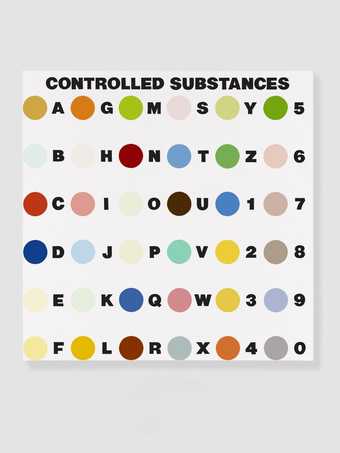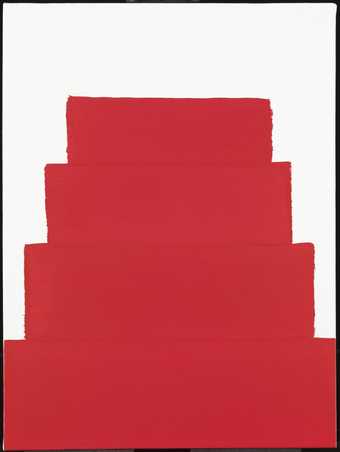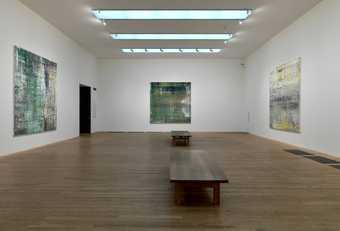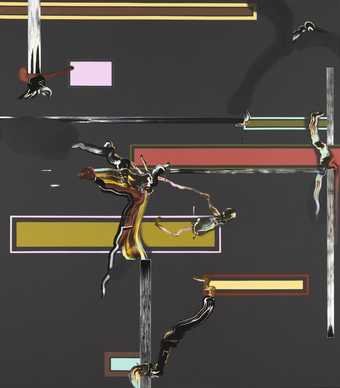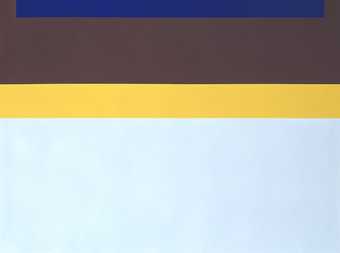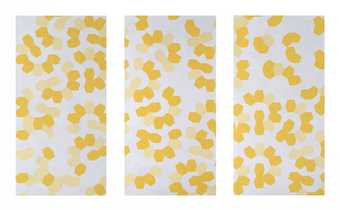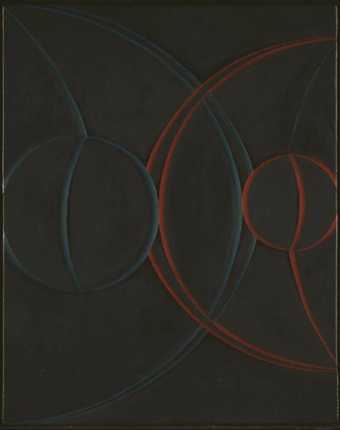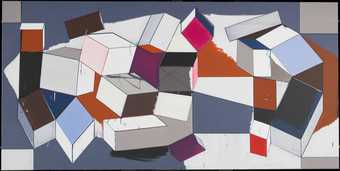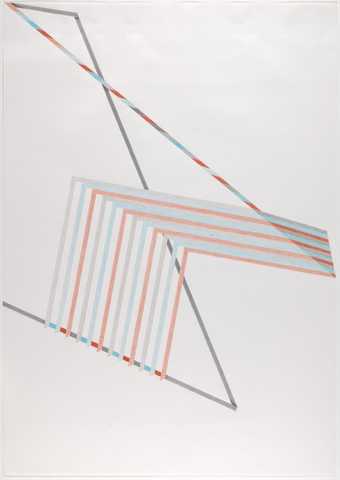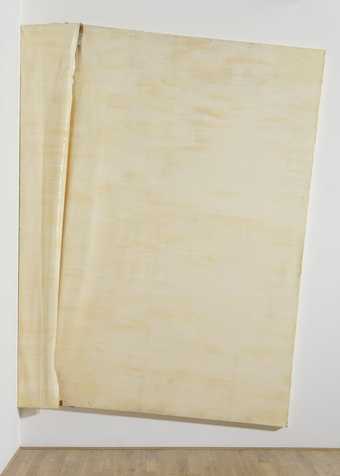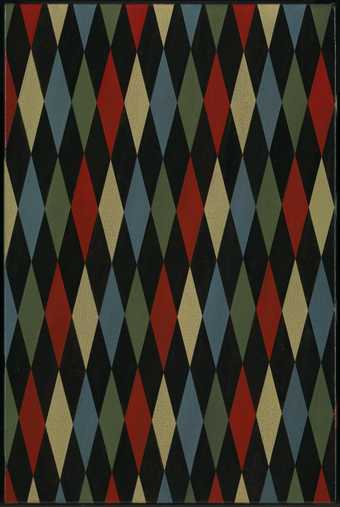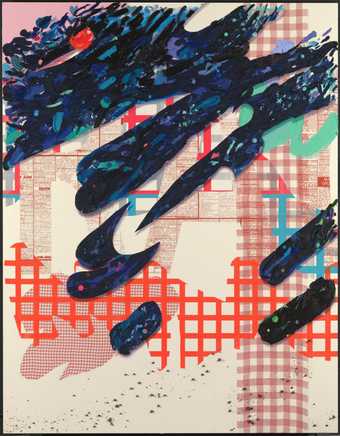
Not on display
- Artist
- Tomma Abts born 1967
- Medium
- Acrylic paint and oil paint on canvas
- Dimensions
- Support: 480 × 380 mm
- Collection
- Tate
- Acquisition
- Presented by Tate Members 2011
- Reference
- T13592
Summary
Zebe is a painting in acrylic and oil on canvas. Its size is consistent with the format of all of Abts’s paintings to date, measuring 48 x 38 centimetres. Red and blue-grey stripes approximately one centimetre in width cover the entire surface of the painting, in blocks of varying direction. A curvilinear line dissects the canvas horizontally at its centre, causing a rupture at the point where two blocks of stripes meet in slight misalignment. This curving line is repeated vertically to right and left in a paler hourglass shape which appears to sit on top of the painting. In fact, its lines are created by areas of the canvas which have been left untouched after the initial layer of acrylic was applied. The combination of stripes and curved lines creates a perpetual feeling of movement, so that the eye is unable to rest on any one point. Zebe is typical of Abts’s painting technique, in which the canvas is initially covered with loose, thin washes of bright, vibrant acrylic paint onto which layers of oil paint are then methodically applied. Forms and shapes gradually emerge and are put through a continual process of readjustment until a composition is eventually arrived at or, in the artist’s words, until the painting becomes ‘congruent with itself’ (email to Tate curator Lizzie Carey-Thomas, 8 August 2006).
Abts was born in Germany but has lived and worked in London since the mid-1990s. In 2006 she was awarded the Turner Prize. Zebe exemplifies many of the features found in her paintings: areas where the transparent veil of acrylic wash initially applied to the canvas has been revealed, acting as a ‘window’ back through time; the use of shadowing to create a three dimensional effect; and seams and rifts caused by the constant layering and alterations made to the composition. In Zebe, however, Abts extended her painterly repertoire by using multi-directional bold stripes for the first time, as well as exploring the optical effects of the gradual fading of tones from dark to light. Zebe can be seen as having a formal relationship with the abstract paintings of British artist Bridget Riley (born 1931, see for example Fall 1963, Tate T00616) and other Op (‘optical’) art of the 1960s. However, like all Abts’ paintings, the composition has evolved according to its own generative logic and does not refer to anything beyond its perimeter.
Further reading
Tomma Abts, exhibition catalogue, Kunsthalle Basel 2005.
Turner Prize 2006, exhibition catalogue, Tate Britain, London 2006.
Laura Hoptman, Bruce Hainley and Jan Verwoert, Tomma Abts, London 2008.
Lizzie Carey-Thomas
October 2010
Does this text contain inaccurate information or language that you feel we should improve or change? We would like to hear from you.
Display caption
Zebe conforms to the format of all Abts’s paintings, with its canvas support measuring 48 x 38 centimetres. The canvas is initially covered with loose, thin washes of bright acrylic paint to provide an activated surface onto which layers of oil paint are then methodically applied. Forms and shapes gradually emerge and are put through a continual process of readjustment until a composition is eventually arrived at or, as Abts explains, until the painting becomes ‘congruent with itself’.
Gallery label, October 2013
Does this text contain inaccurate information or language that you feel we should improve or change? We would like to hear from you.
Explore
- abstraction(8,615)
-
- non-representational(6,161)
-
- geometric(3,072)
You might like
-
Damien Hirst Controlled Substance Key Painting
1994 -
Martin Creed Work No. 1102
2011 -
Gerhard Richter Cage (1) - (6)
2006 -
John McLean Opening
1987 -
Bernard Cohen Out There
1994–5 -
Fiona Rae Night Vision
1998 -
Jean Spencer [no title]
1997 -
Michael Kidner Dissolving Yellow
2001 -
Robert Mangold Column Structure II
2006 -
Tomma Abts Noeme
2004 -
Thomas Scheibitz 90 Elements
2007 -
Tomma Abts Untitled no. 6
2008 -
Angela de la Cruz One Painting
1999 -
Gillian Carnegie Untitled
2008 -
Laura Owens Untitled
2012

